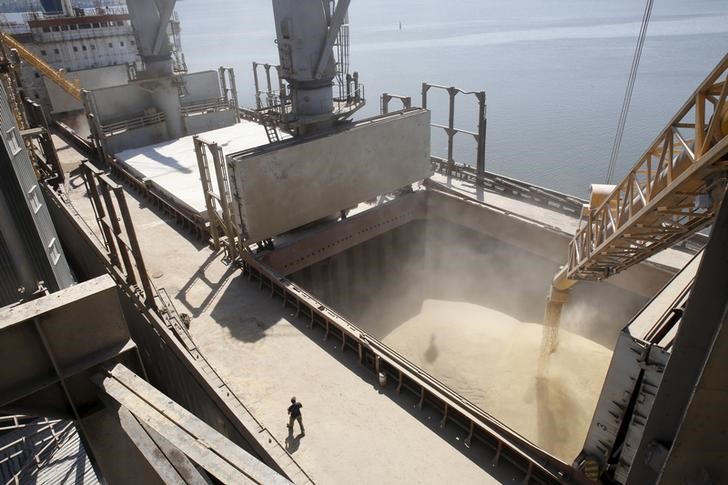* Russia, Ukraine, Kazakhstan boosted grain exports in 2017/18
* Huge exports opened new markets in Asia, Africa, South America
* The three countries may get new markets due to global trade war
* China may start buying more wheat, corn, soybeans from them
* EU could turn to Ukraine for corn
By Polina Devitt and Hallie Gu
MOSCOW/BEIJING, July 10 (Reuters) - Trade conflict between the United States and China could further boost already booming grain and oilseed exports from the Black Sea region, traders and analysts said.
New opportunities to sell wheat, corn and soybeans to China and even the European Union are set to open up for the region's main exporters Russia, Ukraine and Kazakhstan, whose recent ascendancy has already ended full U.S. dominance in markets such as Nigeria and Mexico.
The United States and China slapped tit-for-tat duties on $34 billion of each other's imports on Friday, with Beijing accusing Washington of triggering the "largest-scale trade war". Black Sea region's share of the international wheat market climbed to about 37 percent in 2017/18, according to the International Grains Council, comfortably topping the United States and Canada combined.
China is the world's top wheat producer but still imports about 4 million tonnes of the grain each year.
In the 2017/18 season (June/May) the United States exported 902,400 tonnes of wheat to China, down from 1.56 million in the prior season, according to U.S. government data.
For Kazakh wheat, the pick-up in Chinese imports started due to Beijing's Belt Road policy and before the trade dispute took off, but the tariff row accentuates the trend.
"We have just started buying wheat from Kazakhstan this year. Our first order was for several thousand tonnes," a Chinese wheat trader said. "We will see about sales and profits. If they're good, we will increase imports for sure. It is related to the current trade war."
"Now that you can't bring in American wheat, it gives us more incentive to buy from Kazakhstan. And once your trading of Kazakh wheat reaches a certain volume, you get government preferential support," the trader added.
Among the risks for this strategy are difficult logistics and unstable quality seen in Kazakh and Russian wheat, said another trader who has been looking for more Kazakh wheat deals.
Black Sea wheat may not be able fully to replace its U.S. counterpart due to different quality grades, meaning some traders will also turn to Canadian wheat, he added.
According to statistical data, Russia and Ukraine, whose traditional buyers had been in North Africa and the Middle East, boosted wheat supplies to Vietnam, Indonesia, the Philippines, Spain, Tunisia, Tanzania, Sudan, Oman, Mexico and Kenya in the 2017/18 season.
One location in which Russia has taken away from U.S. wheat market share is Nigeria, which like Brazil traditionally favours a higher-protein grain such as U.S. hard red winter.
PRICES LOUDER THAN WORDS
In a sign that may worry some U.S. wheat traders further, Brazil bought Russian wheat in July for the first time in eight years. this new era of trade wars, prices talk louder than words," said Swithun Still, director of Solaris, which specialises in trading Russian agricultural commodities.
"It's likely that China will aim to buy more grains and oilseeds from the Black Sea and more beans from South America. Mexico has been buying lots of Russian wheat and will continue as prices are attractive compared to U.S. wheat," he added.
The trade spat could also boost exports of Black Sea corn and soybeans.
Russian authorities recently reported a record 850,000 tonnes of soybean exports to China in July 2017-May 2018, more than double the 340,000 tonnes a year earlier, Svetlana Malysh, Kiev-based Black Sea agriculture market analyst at Thomson Reuters, said.
"Black Sea countries, mainly Russia, may intensify their soybean shipments to China in case of any U.S. deliveries' disruption," she added.
The trade conflict is also a chance for Ukraine to boost supplies of its corn to the European Union, which imposed a 25 percent import duty on U.S. corn in June, Malysh said.
China can also turn to Ukraine and Russia for corn in case it reduces purchases from the United States, according to Matt Ammermann, commodity risk manager with INTL FCStone.
